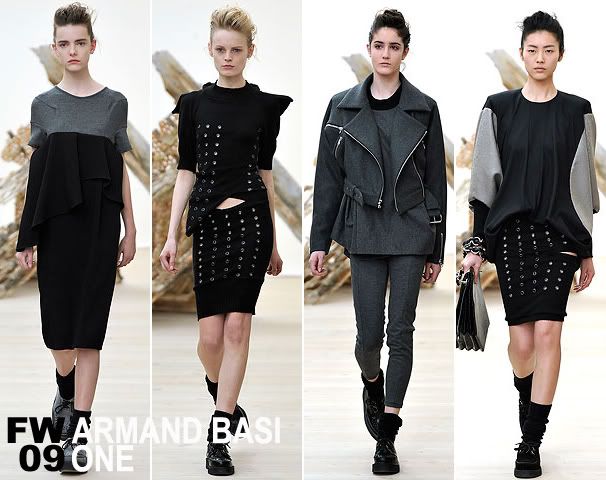
the armand basi company was founded in barcelona in 1948 as a workshop producing high quality knitwear that sold its goods to some of the most prestigious shops in spain. however, it wasn't until 1986 when the label we now know as armand basi was officially launched as an independent fashion house. initially gaining worldwide recognition for its menswear collections, since the appointment of marcus lupfer as creative director for the womenswear division and the decision to show lupfer's youth based directional approach during london fashion week, the label started gaining a newfound recognition and credibility with new customers and influential buyers and editors. for fall/winter 2009, lupfer, like many of his colleagues, delved into the eighties as a source of inspiration. while many of his fellow designers divined the opulent excess of the "me" decade, lupfer instead decided to take inspiration from the other school of designers who at that time made the most significant contribution to the fashion world and whose groundbreaking ideas still resonates to this day, the japanese. there was a play on proportion where exaggerated shapes were used to give old classics a modern twist. cropped and boxy motorcycle jackets and over sized menswear inspired military coats were worn with voluminous pleated trousers that softly tapered down the ankles and sexy knit dresses that nodded its head to the history of the house but made modern with asymmetric draping and industrial gromets all done in a strict palette of slate grays, blacks, deep olives and khaki. while editors dubbed those watershed japenese collection from the eighties as "hiroshima chic", there was none of that apocalyptic connotations attached to these clothes. it was strong, with a masculinity that only heightened the wearer's femininity. this wasn't power dressing in the eighties sense. it was power dressing for the new millennium. the type of dressing that fits perfectly with today's unstable climate.
photo: style.com

No comments:
Post a Comment